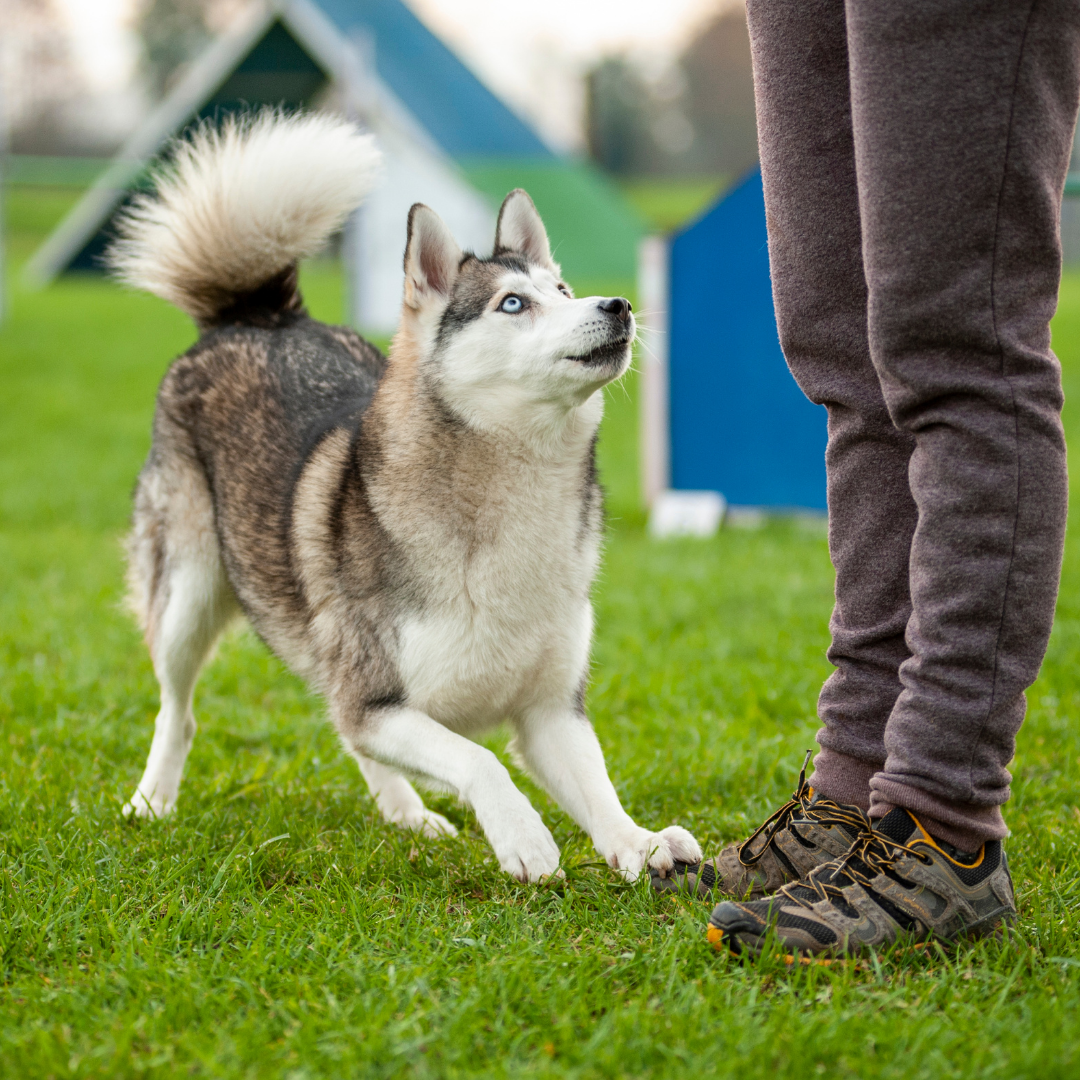Imagine the joy of having a well-behaved and obedient husky by your side. In this article, we’ll explore the art of teaching your delightful husky basic commands such as sit, stay, and more. Whether you’re a proud owner of a husky pup or thinking about bringing one into your life, these simple yet crucial commands will not only help establish a strong bond with your furry friend but also ensure their safety and your peace of mind. So, grab some treats and get ready to embark on this exciting journey of training your husky to be the best-behaved dog on the block!
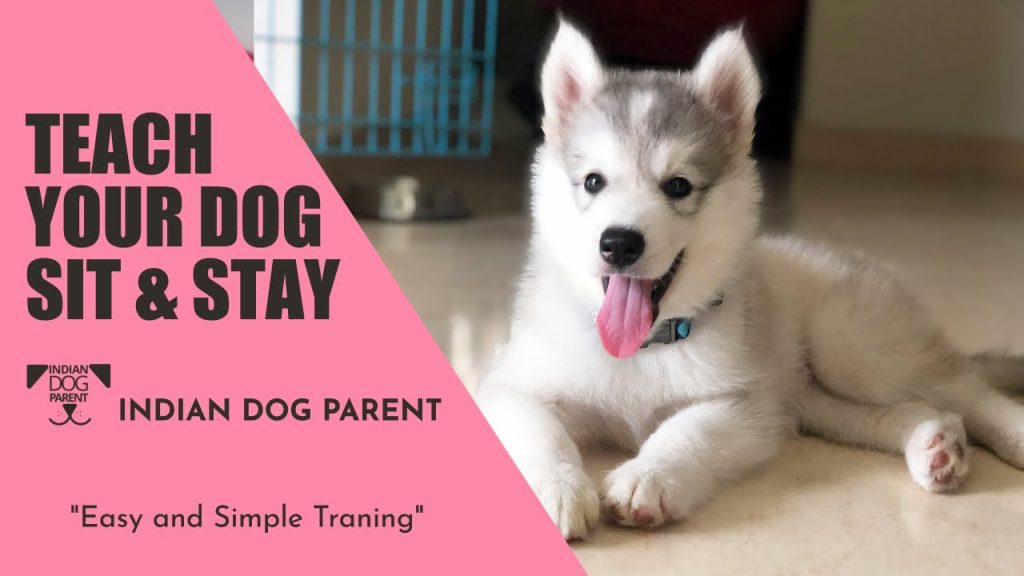
This image is property of i.ytimg.com.
Husky Training Basics
Understanding the Husky Breed
When it comes to training a Husky, it’s important to have a good understanding of the breed’s characteristics. Huskies are known for their independent nature, high energy levels, and strong instincts. They are intelligent and can be quite stubborn at times. However, with the right approach and consistency, Huskies can excel in training and become well-behaved companions.
Benefits of Training Huskies
Training your Husky is not only essential for their well-being, but it also has numerous benefits for both you and your furry friend. Through training, you can establish a strong bond with your Husky and develop effective communication. Training helps in managing their high energy levels, reducing destructive behaviors, and promoting mental stimulation. It also ensures their safety and allows them to become well-adjusted members of the community.
Establishing Effective Communication
To effectively train your Husky, establishing clear and consistent communication is crucial. Huskies respond best to positive reinforcement training methods, which involve rewarding desired behaviors rather than punishing unwanted ones. Using a clear and confident tone of voice, hand signals, and consistent cues will make it easier for your Husky to understand and follow your commands. Remember, patience and consistency are key in establishing effective communication with your Husky.
Preparation for Training
Creating a Positive Learning Environment
Creating a positive learning environment is essential for your Husky’s training success. Start by finding a quiet and distraction-free area for training sessions. Eliminate any potential hazards and provide comfortable bedding for your Husky. Make sure the training area has proper lighting and ventilation. Additionally, ensure that you are in a calm and positive state of mind while training, as your energy will greatly impact your Husky’s receptiveness.
Gathering Essential Training Supplies
Before you begin training, gather all the necessary training supplies. This includes a collar or harness, a sturdy leash, treats or rewards, and toys. Choose a collar or harness that fits your Husky properly and ensure the leash is strong and secure. When it comes to treats and rewards, opt for small, soft, and highly palatable treats that your Husky will find enticing. Having a variety of reward options, such as verbal praise and play, can also be beneficial during training.
Preparing Treats and Rewards
Preparing treats and rewards in advance will make your training sessions smooth and efficient. Cut the treats into small, bite-sized pieces that are easy for your Husky to consume quickly. You can use commercial treats or make your own by using lean meats or vegetables. Remember to choose treats that are safe and appropriate for your Husky. Prepare a variety of rewards to keep your training sessions interesting and engaging for your furry friend.
Teaching the ‘Sit’ Command
Step 1: Getting Your Husky’s Attention
Before teaching the ‘Sit’ command, it’s important to first get your Husky’s attention. You can use a verbal cue, such as their name, to call their attention towards you. Avoid using physical force or pulling on the leash to make them comply. Instead, use positive reinforcement techniques, such as treats or praise, to encourage them to look at you and engage with you.
Step 2: Offering the Sit Command
Once you have your Husky’s attention, offer the ‘Sit’ command by saying the word clearly and firmly. Simultaneously, use a hand signal by extending your arm out in front of you with your palm facing upward. The combination of the verbal command and hand signal will help your Husky understand what you are asking them to do.
Step 3: Repeating and Reinforcing
Repeat the ‘Sit’ command and hand signal while gently guiding your Husky into a sitting position using a treat. As they begin to understand the command and go into a sitting position, reward them immediately with a treat and verbal praise. Consistency is key here, so repeat the process several times, gradually increasing the duration of the sitting position.
Step 4: Gradual Elimination of Treats
Once your Husky consistently responds to the ‘Sit’ command, begin gradually reducing the number of treats used for reinforcement. Instead, rely more on verbal praise and physical affection to reward their compliance. This will encourage your Husky to respond to the command without relying solely on treats.
Mastering the ‘Stay’ Command
Step 1: Solid Sit Position
Before introducing the ‘Stay’ command, ensure that your Husky has mastered the ‘Sit’ command. This will serve as the foundation for teaching them to stay in one place. Once your Husky is in a sitting position, give them a moment to settle and become comfortable.
Step 2: Introducing the ‘Stay’ Command
With your Husky in the sitting position, use a clear and confident voice to give the ‘Stay’ command. Simultaneously, use an open-palm hand signal with your palm facing forward. This signal will indicate to your Husky that they should remain in the sitting position.
Step 3: Adding Distance and Duration
Once your Husky understands the ‘Stay’ command, start adding distance between you and your dog. Take a step back and if they remain in the sitting position, return to them and reward them with praise and a treat. Gradually increase the distance and the duration of the ‘Stay’ command, always ensuring that your Husky is successful before progressing further.
Step 4: Gradual Increase in Distractions
To further challenge your Husky’s ability to stay, gradually introduce distractions. Start with mild distractions, such as a toy or a low-level noise, and slowly build up to more challenging ones. Remember to always reward your Husky for successful stays and be patient if they struggle with distractions. Practice and consistency will help them improve over time.
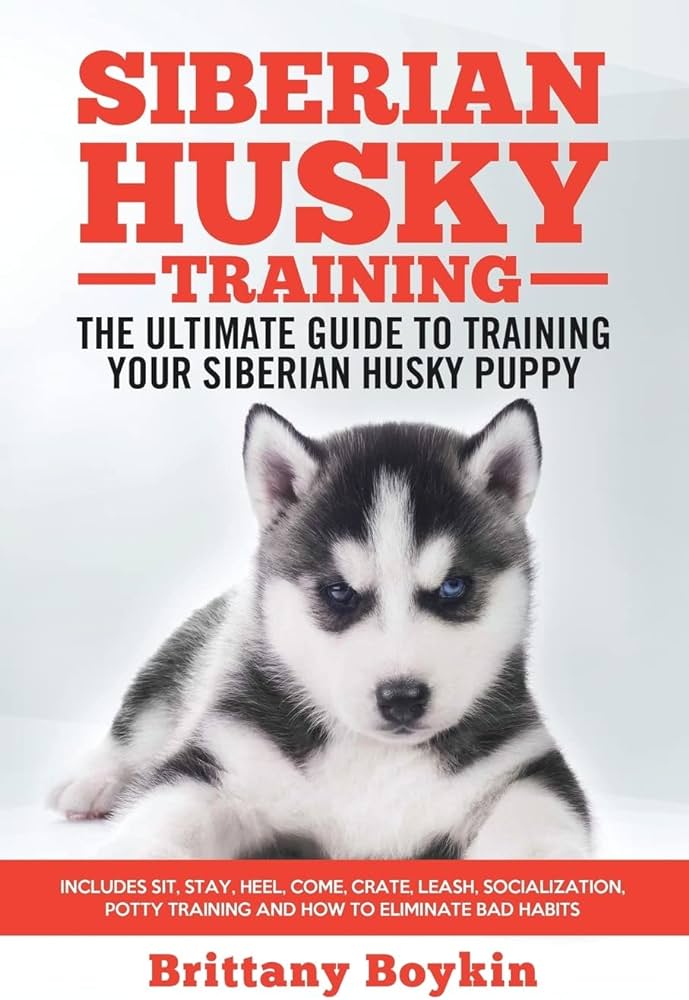
This image is property of Amazon.com.
Recalling Your Husky with ‘Come’
Step 1: Building a Reliable Recall
Having a reliable recall is crucial for your Husky’s safety and well-being. Start by associating the cue word “Come” with positive experiences. Call your Husky using their name followed by the word “Come” in a happy and inviting tone. When they come to you, reward them with treats, praise, and affection. Repeat this exercise in various locations and gradually increase the distance.
Step 2: Training in a Controlled Environment
Begin training the ‘Come’ command in a controlled and familiar environment with minimal distractions. This could be your backyard or a quiet park. By starting in a controlled environment, you can help your Husky understand the desired behavior more easily.
Step 3: Adding Distance and Distractions
Once your Husky reliably comes to you in a controlled environment, start practicing in new locations with slightly more distractions. Begin by adding small distractions, such as toys or mild noises, and gradually increase the intensity of distractions. Always reward your Husky for coming to you, even if it takes them a little longer or there are distractions present.
Step 4: Maintaining a Positive Association
Maintaining a positive association with the ‘Come’ command is crucial for long-term success. Never punish or scold your Husky when they come to you, even if they took longer or were initially distracted. Always reward them with treats, praise, and a positive tone of voice to reinforce their understanding of the command.
Polishing Leash Walking Skills
Step 1: Teaching Loose Leash Walking
Teaching your Husky to walk politely on a leash involves training them to walk without pulling or lunging. Start by using a well-fitting collar or harness and attach a sturdy leash. Hold the leash with a relaxed grip and stand tall, avoiding any tension in your body. Begin walking, and when your Husky starts pulling, immediately stop moving. Wait for them to release the tension on the leash before continuing. Reward them with praise and a treat when they walk politely beside you.
Step 2: Practicing in Low-Distraction Environments
To build a solid foundation for leash walking, initially practice in low-distraction environments, such as your backyard or a quiet street. This allows your Husky to focus more easily and understand the desired behavior. Gradually increase the level of distractions as they become more proficient.
Step 3: Adding Distractions Gradually
Once your Husky is comfortable walking politely in low-distraction environments, start introducing controlled distractions. This could be other dogs, people, or enticing scents. When encountering distractions, maintain a calm and confident demeanor, redirect your Husky’s attention back to you, and reward them for appropriate behavior.
Step 4: Incorporating Additional Commands
As your Husky becomes more proficient in leash walking, you can incorporate additional commands, such as ‘Sit’ or ‘Stay,’ into your walks. This adds mental stimulation and helps reinforce their training. Practice these commands during your walks to keep their focus and engagement levels high.
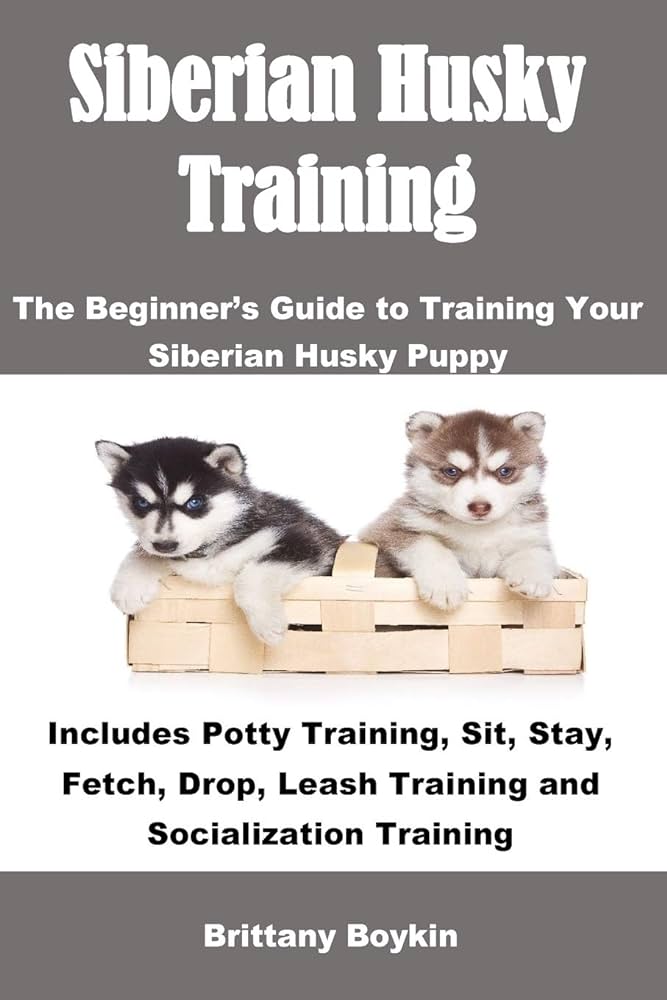
This image is property of Amazon.com.
Curbing Husky Jumping Behavior
Step 1: Identifying Triggers for Jumping
To address and curb jumping behavior, it’s important to identify the triggers that cause your Husky to jump. Common triggers include excitement, seeking attention, or greeting new people or animals. By understanding the triggers, you can better manage and redirect their behavior.
Step 2: Teaching an Alternative Behavior
To redirect your Husky’s jumping behavior, teach them an alternative behavior, such as sitting or offering a paw. Whenever they start to jump, give them a verbal cue for the desired behavior and reward them when they comply. Consistency is key here, so be patient and reinforce the alternative behavior every time they attempt to jump.
Step 3: Consistency and Reinforcement
Consistency is crucial when addressing jumping behavior. Ensure that all family members and visitors are on board with the training plan and follow the same guidelines. Consistently reinforce the alternative behavior by rewarding your Husky with treats, praise, and attention when they demonstrate the desired behavior.
Step 4: Seeking Professional Help if Needed
If your Husky’s jumping behavior persists or is difficult to manage on your own, it may be beneficial to seek professional help from a certified dog trainer or behaviorist. They can provide guidance, personalized strategies, and hands-on assistance to address the jumping behavior effectively.
Teaching ‘Leave It’ and ‘Drop It’ Commands
Step 1: Teaching Your Husky to ‘Leave It’
Teaching the ‘Leave It’ command is important for your Husky’s safety and preventing them from picking up or interacting with harmful or unwanted items. Start by holding a treat or toy in your hand and closing your fist around it. Offer your closed hand to your Husky and say “Leave It” in a calm yet firm tone. If your Husky tries to sniff or paw at your hand, simply close it more tightly. As soon as they stop trying to access the item, reward them with a different treat or toy.
Step 2: Teaching ‘Drop It’ Command
The ‘Drop It’ command is useful when your Husky has something in their mouth that they shouldn’t have. Start by offering your Husky a toy or object they enjoy playing with. As they grab onto it, say “Drop It” in a gentle but firm tone. Hold a treat near their nose to entice them to release the object. Once they release it, immediately reward them with praise and another toy or treat.
Step 3: Consistency and Controlled Exercises
Consistency is key when teaching the ‘Leave It’ and ‘Drop It’ commands. Practice regularly in controlled exercises, gradually increasing the difficulty level. Start with items your Husky is less interested in and then progress to items they find more tempting. Ensure that your Husky receives rewards and positive reinforcement when they successfully leave or drop the desired object.
Step 4: Generalizing the Commands
Once your Husky understands the ‘Leave It’ and ‘Drop It’ commands in controlled exercises, start generalizing the commands in various situations and environments. Practice in different rooms of the house or outdoors to help your Husky understand that the commands apply in all situations. Reward and reinforce their successful compliance with praise and treats.
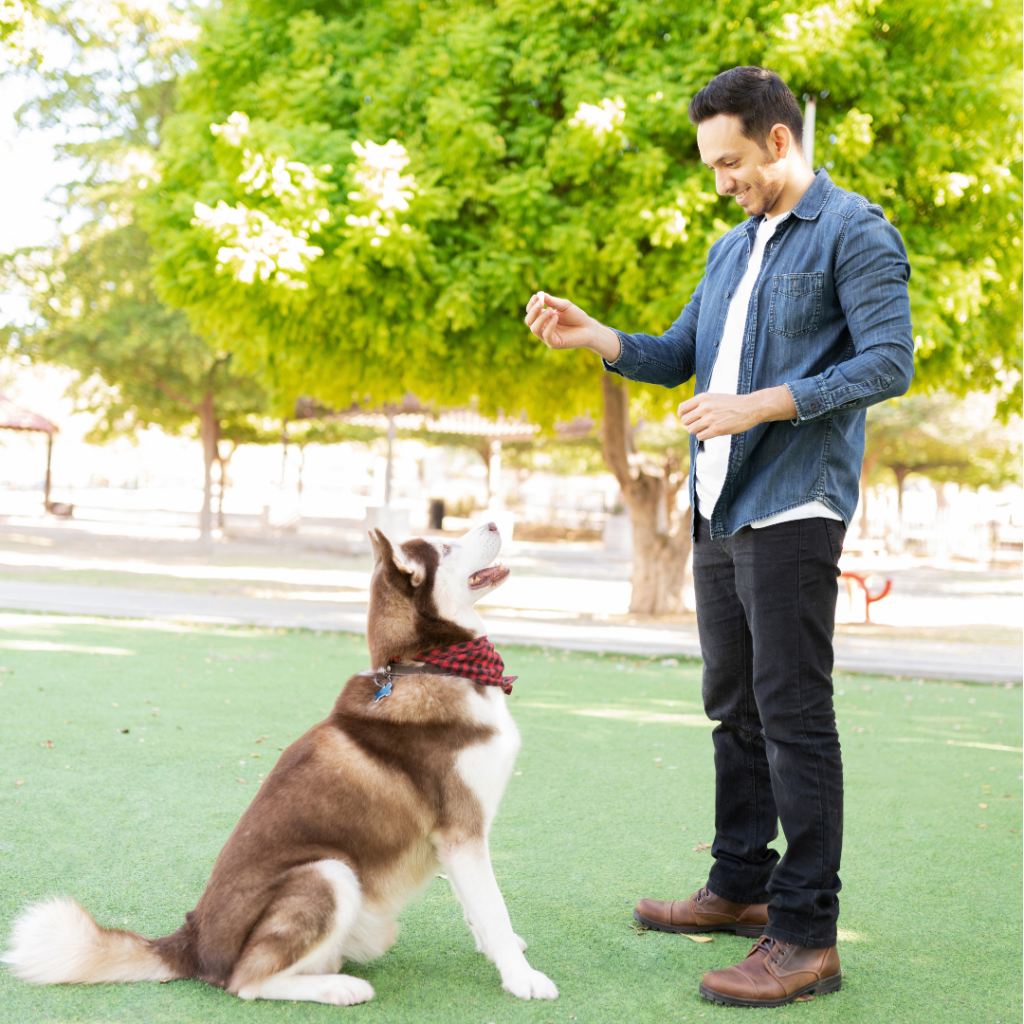
This image is property of foreverhusky.org.
Introducing Basic ‘Down’ Command
Step 1: Luring Your Husky into a Down Position
To introduce the ‘Down’ command, lure your Husky into a down position using a treat. Hold the treat in front of their nose and slowly move it down towards the ground, between their front paws. As they follow the treat with their nose, their body should naturally lower into a down position. Once they are fully down, reward them with the treat and verbal praise.
Step 2: Reinforcing the ‘Down’ Command
Once your Husky has learned to respond to the lure, start adding the verbal cue “Down” as you lure them into the position. Say the word in a clear and confident tone as they lower their body. Gradually decrease the reliance on the lure and use the verbal cue alone to prompt the behavior.
Step 3: Gradual Elimination of Luring
As your Husky becomes more familiar with the ‘Down’ command, begin to phase out the use of treats as a lure. Instead, use verbal cues and hand signals to encourage the behavior. Reward your Husky with praise and occasional treats to reinforce the desired response.
Step 4: Adding Duration to the Position
Once your Husky can easily go into the ‘Down’ position, start gradually increasing the duration they remain in that position before being rewarded. Begin with short durations and gradually build up to longer periods of time. Consistency and patience are key during this process.
Conclusion
Celebrating Progress and Success
Throughout your journey of training your Husky, it’s important to celebrate their progress and success. Recognize and reward your Husky for their achievements, both big and small. Positive reinforcement not only encourages desired behaviors but also strengthens the bond between you and your furry friend.
Maintaining Training as a Lifelong Habit
Training your Husky is not a one-time event, but rather a lifelong commitment. Consistency and ongoing training sessions are necessary to reinforce learned behaviors and continue challenging your Husky’s mental and physical abilities. Regular training sessions, even for short durations, will help maintain good behavior and prevent regression.
Exploring Advanced Training Techniques
Once you and your Husky have mastered the basic commands, consider exploring advanced training techniques and participating in activities such as agility, obedience competitions, or scent work. These activities provide mental stimulation, enrich your Husky’s life, and strengthen the bond between you.
Remember, training your Husky should be a positive experience for both you and your furry companion. Approach each training session with patience, consistency, and a friendly tone. With dedication and understanding, you can help your Husky thrive and become a well-behaved and happy member of your family.
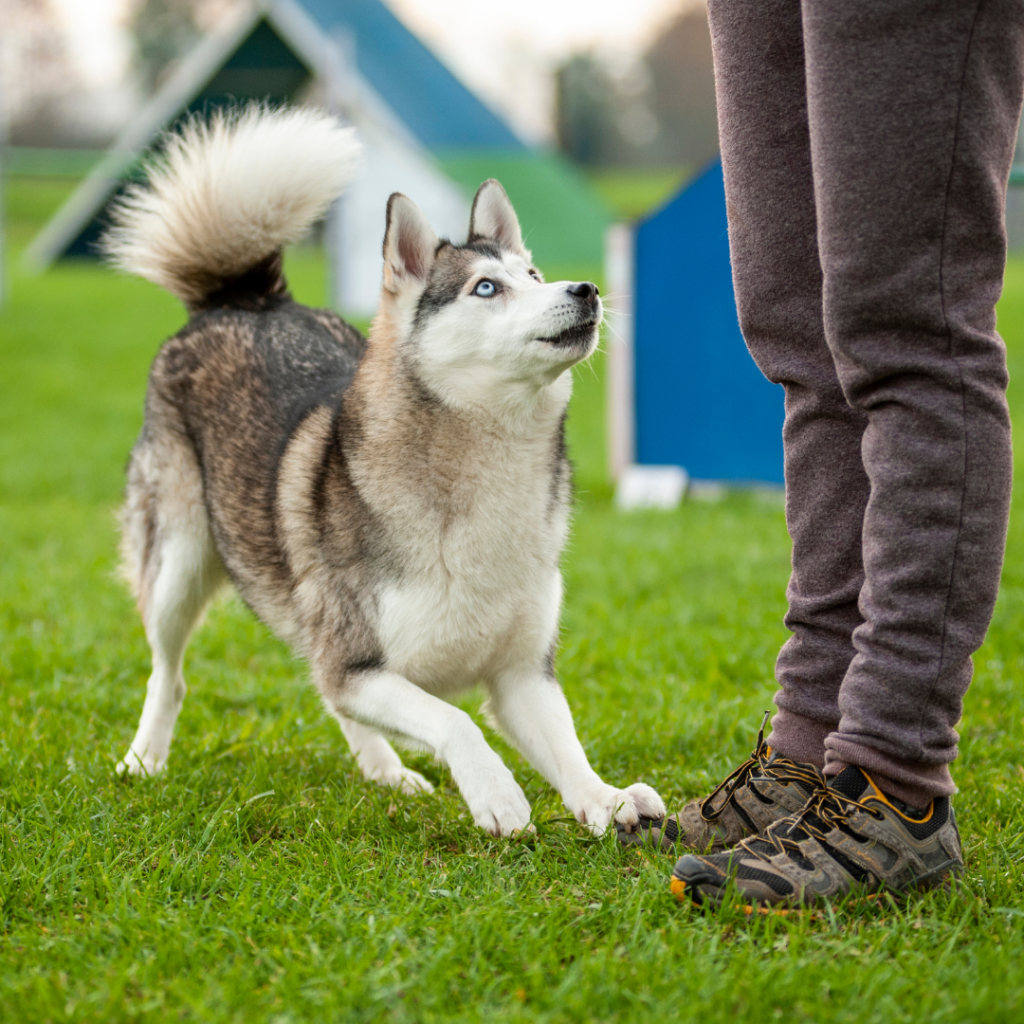
This image is property of foreverhusky.org.
